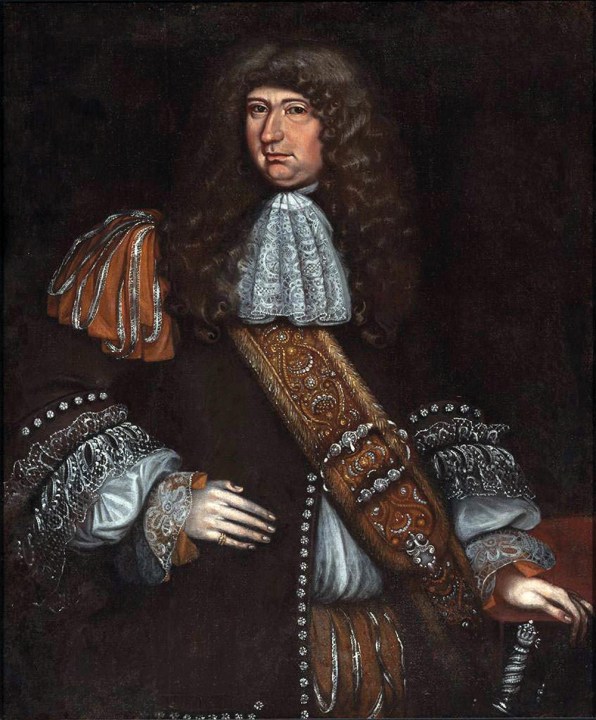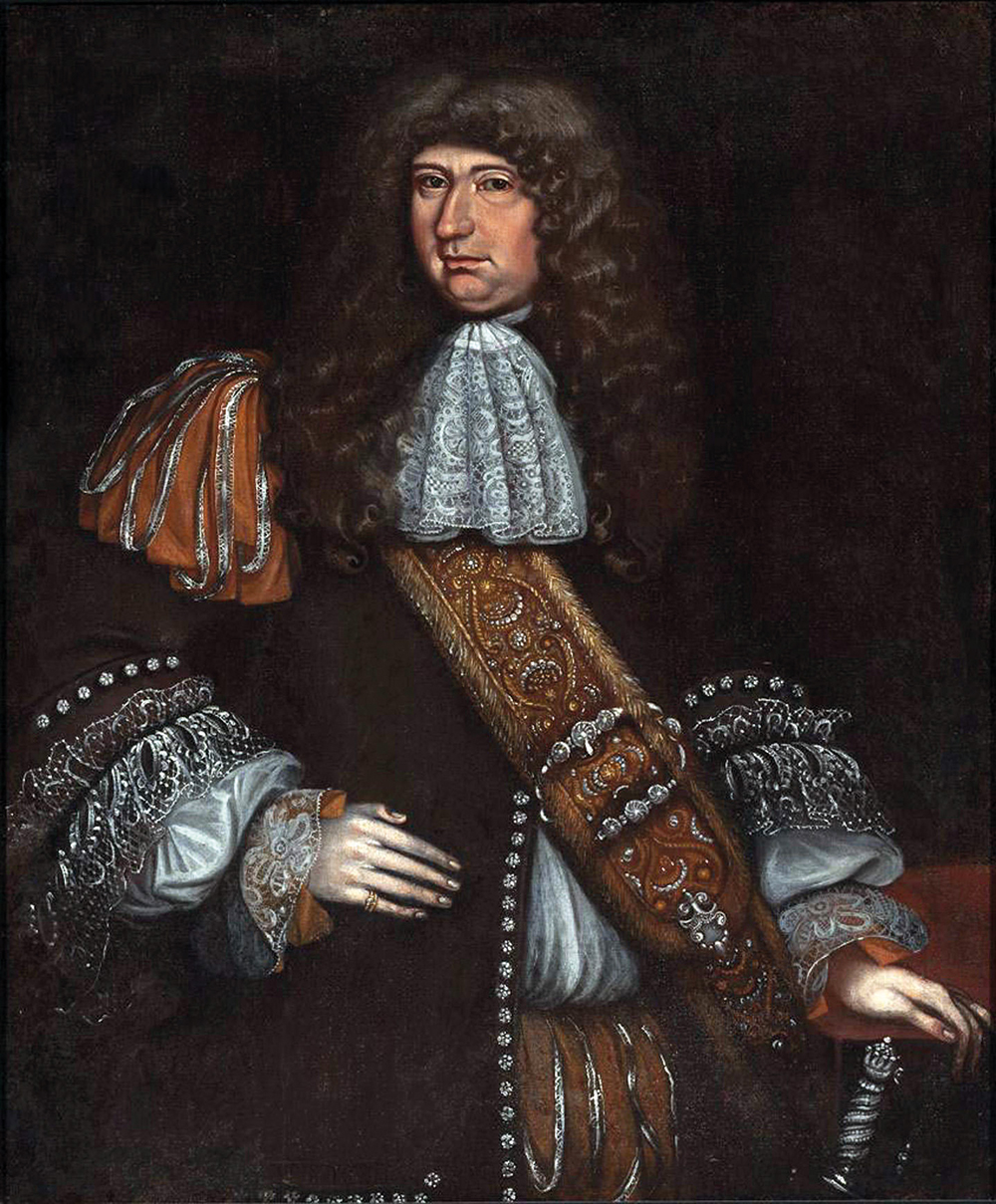
Samuel Pepys didn’t much like the subject of Dennis Sewell’s new biography. Sir George Downing (1623-84) was for a short time Pepys’s boss at the Exchequer, during which period the diarist observed that his employer was ‘so stingy a fellow I care not to see him’.
Despite being one of the richest men in Restoration London, Downing’s parsimony was legendary and was the subject of one of the Diary’s most celebrated comic anecdotes. Having recently purchased a country estate in Cambridgeshire, Downing learned that it was customary for the landowner to host a Christmas dinner for the poor of the parish. Anticipating a grand celebratory affair, crowned by a belt-loosening roast with all the trimmings, the locals instead endured a tortuous afternoon as they sat down with just Downing, his mother and his wife to bowls of soup savouring of something between gruel and farmland run-off. The astonished silence was punctuated only by the family as they came across fatty chunks in the thin liquid:
By and by [Downing’s wife] would begin and say ‘Good pork’. ‘Yes,’ says the mother, ‘good pork’. Then [Downing] cries ‘Yes, very good pork’ … to which nobody made an answer, they going there not out of love or esteem of them, but to eat his victuals – and with this he is jeered now all over the country.
This is Pepys at his pointillist best, dropping small dots of local colour to help us grasp the enormities of Restoration society; but it also reveals a satirical eye worthy of Ben Jonson, Charles Dickens or The Fast Show.
There isn’t time for this anecdote in Sewell’s richly informative study because the focus throughout is on the altogether more serious business of Downing’s politics, his shifting allegiances, the accommodations he came to and the lives he destroyed as one of the 17th century’s most successful and hyperactive intelligencers.
He was first appointed to the role of scoutmaster general, a kind of military spy handler, by Oliver Cromwell in 1649 and held similar appointments for the Protectorate and, to the great surprise of many contemporaries, Restoration regimes. It is Downing’s switch of loyalties from tenacious defence of republicanism and Cromwellianism through to his protective intimacy with the Stuart monarchy – Charles II once told him he was his ‘loving friend’ – that provides the ‘Turncoat’ for Sewell’s title. But while ‘Double Life’ nicely frames the worlds of subterfuge and espionage that Downing inhabited, it doesn’t nearly do justice to the vast range of experiences he had or the positions he held.
Downing’s CV is truly astonishing by the standards of any period. He was a member of the first graduating class at Harvard in 1642 (having moved with his family from Ireland to New England in his early years) and subsequently occupied the following roles: chaplain to John Okey’s regiment in the New Model Army, where he was noted for his preaching alongside regicidal firebrands such as Hugh Peter; soldier; spy; news correspondent; MP (for Edinburgh, Carlisle, and Morpeth); special envoy to the Hague (for both Cromwell and Charles II); regicide hunter (offering up former comrades from the New Model Army for torture and execution, pioneering, in Sewell’s account, the technique of extraordinary rendition); baronet; Treasury reformer; entrepreneur; and property developer (Downing Street in Westminster bears his name).
What likely spared Downing as the nation strove to forget its ties to Cromwell after 1660 was that, unlike other preacher-combatants in the New Model Army, he seems never to have called for Charles I’s execution. It also helped that he was ruthless, had access to the very highest quality intelligence, was close to General George Monck, one of the architects of the Restoration settlement, and approached Charles II in exile to offer his apologies and services.
A previous generation of biographers followed hostile 17th-century commentators in condemning Downing’s servility, treachery and avarice, demonstrating that he was only ever loyal to himself or true to those who paid him. Sewell isn’t much more forgiving than this and emphasises Downing’s ‘acuity’ as his only engaging virtue. The finest portions of the book track Downing’s formative experiences at Harvard, where that acuity was honed. We learn in particular about his time under its first head, Nathaniel Eaton, ‘a deranged and brutal sadist’ who gave his charges terrifying glimpses of what violence might achieve, how it might bend even the most beautiful or rigid ideals.
There are moments, though, when Downing briefly drifts from view – spies don’t, after all, readily leave textual traces for archivists – and the biography veers towards an episodic military history. And while Sewell is really very good on the mechanics of cipher and spying-letters, he might have quoted more fully from Downing’s extant Restoration correspondence in order to give some of his earlier speculative attributions, based on claims about Downing’s prose style, more substance.
But Sewell is extremely acute himself in emphasising how Downing’s provisional loyalties emerged in the very particular socio-political circumstances of mid-17th-century England. This was a period when wholesale regime change happened with such bewildering rapidity that individuals had to think carefully about whether political commitment of any enduring kind was viable at all. In this context, when ‘turncoats were ten a penny’, it is telling that Downing’s bad faith still stood out, and set new standards for unscrupulousness.









Comments